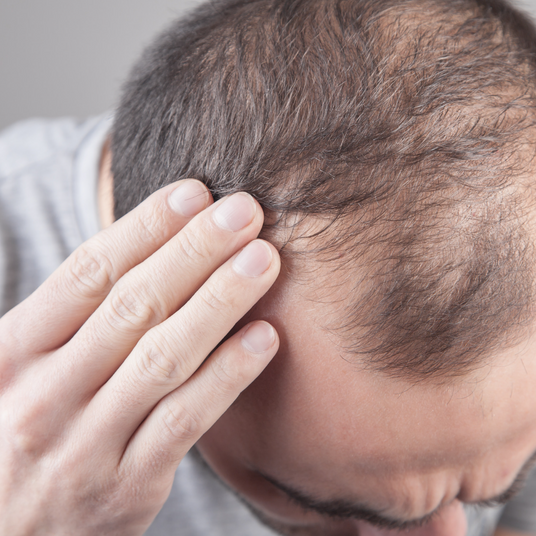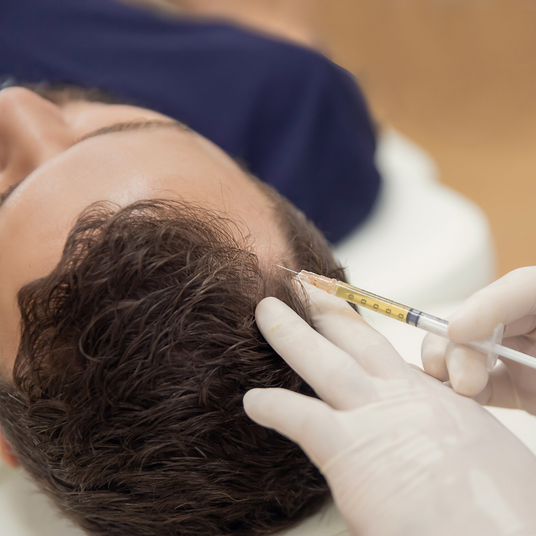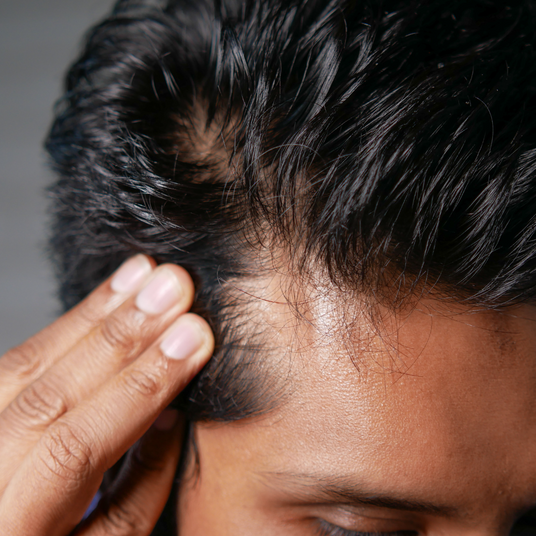
What is PRP for Hair Loss Reduction?
If you're suffering from hair loss, you may have heard the term "PRP" thrown around as a possible solution. PRP, or Platelet-Rich Plasma, is a treatment option that utilises the patient's own blood to stimulate hair growth. The process involves drawing a small amount of blood from the patient, which is then spun in a centrifuge to separate the plasma from the rest of the blood. The resulting plasma is then injected back into the patient's scalp in areas where hair loss has occurred.
The growth factors in the plasma help to stimulate the hair follicles and encourage new hair growth. PRP also increases blood flow to the scalp, which in turn helps to nourish the hair follicles and promote healthy hair growth.
It's important to note that PRP is not a one-time solution for hair loss. Multiple treatments are typically required in order to see sustained results. However, many patients report significant improvement in hair density and thickness after just a few treatments.
If you're considering PRP for hair loss, it's important to consult with a qualified professional who can help determine if the treatment is right for you. With its proven track record and minimal risks, PRP is a promising option for those looking to address hair loss and achieve a fuller, healthier head of hair. At Silk Clinical Aesthetics, lead nurse injector Shontelle Prasad has extensive experience in PRP treatments for hair loss reduction as well as for those who have undergone hair transplants as part of the foundational aftercare to this procedure.

Treatment Benefits
- Can increase hair thickness, density, health, resilience and the overall number of hair follicles.
- As the treatment uses the patient's own blood, there is no risk of allergic reactions or infections.
- Is a quick and relatively painless procedure.
- Clinical studies have demonstrated that PRP can be effective in treating conditions such as alopecia areata, which is an autoimmune disorder that causes hair loss, and androgenetic alopecia, which is a genetic form of hair loss that affects both men and women.
- PRP for hair loss reduction is a versatile treatment option that can be combined with other hair loss treatments. PRP can be used in conjunction with hair transplant surgery to promote better results. It can also be combined with topical hair loss treatments like minoxidil to enhance their effectiveness.
We recommend a course of four treatments for optimal results.

What to Expect During Treatment
During a PRP treatment for hair loss reduction, you can expect to be in and out of the clinic in under an hour. The first step involves a consultation with a qualified medical professional who will assess your suitability for the treatment. If you're a good candidate, your practitioner will take a small amount of your blood and place it in a centrifuge. This machine spins the blood rapidly, separating the platelet-rich plasma (PRP) from the other components. The PRP is then collected into a syringe and injected into the areas of the scalp where hair loss has occurred.
PRP contains growth factors that help to stimulate hair growth and improve hair thickness and overall hair quality. Your body's natural healing processes are also triggered, helping to repair any damage to hair follicles and encouraging new hair growth. The treatment itself usually takes around 45 minutes to complete, and you should be able to resume your normal activities immediately after. You may experience mild discomfort or pressure at the injection sites, but this sensation usually subsides quickly.
PRP therapy involves several sessions spaced several weeks apart. The number of sessions will depend on the extent of your hair loss and other factors. Typically, patients require between three and four sessions to see significant improvement. It's important to note that while PRP treatment has shown promising results for hair loss reduction, it may not be suitable for everyone. Your practitioner will assess your case and recommend the most appropriate treatment plan.
